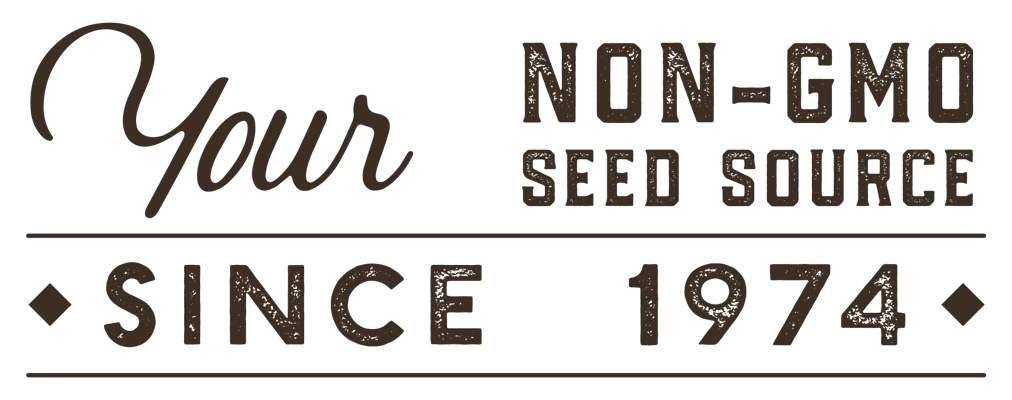Download Free Vegetable Growing Guide PDF
Growing French Garden Yellow Fillet Beans in the Vegetable Garden
To start, French Garden Yellow Fillet Bush Beans grow best when directly sown into the soil, as they don’t respond well to transplanting. Wait until all danger of frost has passed and the soil has warmed to at least 60 F, typically a few weeks after the last frost date. Plant the seeds about 1 inch deep in the soil. Space the seeds about 4-6 inches apart in rows. The rows should be spaced 18-24 inches apart for ease of access during maintenance and harvesting.
Keep the soil consistently moist but not waterlogged. Beans need water most critically during flowering and pod formation. Apply a layer of organic mulch around the plants to help retain soil moisture and control weeds. Bush beans generally do not require additional fertilizer if planted in rich, well-amended soil; however, a light application of a balanced fertilizer can be beneficial if your soil is lacking.
Consider planting beans near carrots, cauliflower, or cucumbers, which make excellent companions. Avoid planting beans near onions or garlic as they can inhibit growth. Ensure the planting site gets full sun, aiming for at least six hours of direct sunlight daily. Avoid handling the plants when they are wet to prevent the spread of diseases. Rotate your bean crops each year to prevent disease buildup and perpetual pest issues in the soil.
Harvesting French Garden Yellow Fillet Beans
The pods should be harvested when they are young and tender, about 4-6 inches long and before the seeds inside begin to bulge. They are typically ready about 45-55 days after planting. Gently hold the plant with one hand and pull the pod off with the other to avoid damaging the plant. Regular harvesting encourages the plant to produce more pods.
About French Garden Yellow Fillet Bean Garden Seeds
The French Garden Yellow Fillet Bush Bean is a bush-type bean, which means it grows in a compact form and does not require staking. This type is generally easier to manage and harvest than pole varieties, as they produce most of their crop at once. This makes them ideal for harvesting for a single meal or for a large batch of preserving. Bush types are also preferred for container gardens.
French beans can also be known as Haricot Vert. They are originally from France, as the name suggests.
With its vibrant yellow color, it adds a splash of brightness to your garden and plate, making it visually appealing.
This bean is prized for its slender, long pods, usually about 4-6 inches in length. The beans are very tender with a superbly delicate and sweet flavor, often considered superior in taste and texture to other bean varieties.
Tips From Our Gardeners
"Although bush beans do not vine like other bean types, I have found that they are still not very sturdy when it comes to holding up all their bean pods. A small trellis or similar structure can keep your bean plants erect and your pods off the dirt."
 |
- Lara Wadsworth, True Leaf Market Writer
|
Other Resources
French Garden Yellow Fillet Bean Seeds Per Package:
- 18 g Packet - Wholesale - Approximately 100 Seeds
- 4 oz - Wholesale - Approximately 632 Seeds
- 1 lb - Bulk Seeds - Approximately 2,528 Seeds
- 5 lb - Bulk Seeds - Approximately 12,640 Seeds
- 25 lb - Bulk Seeds - Approximately 63,200 Seeds
Non-GMO French Garden Yellow Fillet Bean seeds are available for Fast Free Shipping on qualifying orders.
=======
ATTRIBUTES
Basic Info
| Latin Name: |
Phaseolus vulgaris
|
| Bean Sub-Type: |
Wax - Wax beans (also called yellow beans) are very similar to green snap beans and have a similar flavor profile. The primary difference is they lack the chlorophyll that makes green beans green. The yellow hue looks like wax, hence the name. |
| French Garden Yellow Fillet Bean Color: |
Yellow |
| French Garden Yellow Fillet Bean Flavor: |
Known for its exceptionally sweet and delicate flavor, making it a favorite for both raw and cooked applications. |
Growing Info
| Hardiness Zone: |
3, 4, 5, 6, 7, 8, 9 Annual Crop: Not Intended to Overwinter |
| Days to Maturity: |
45-55 |
| Days to Germination: |
5-10 |
| Seeding Depth: |
1 inch |
| Plant Spacing: |
4-6 inches |
| Row Spacing: |
18-24 inches |
| Plant Height: |
12-24 inches |
| Growth Habit: |
Upright |
| Soil Preference: |
Beans prefer well-draining, nutrient-rich, loamy soil with a pH of 6.0-6.8. As light feeders and nitrogen-fixing legumes, beans do not require nitrogen-heavy fertilizers. |
| Temperature Preference: |
Warmer (70-85 F). |
| Light Preference: |
Full Sun |
Other
| Direct Sow: |
Yes, direct sow when soil temperatures are reliably above 60 F. Planting with an inoculant may increase yields, but is certainly not required for a successful grow. |
| Start Indoors: |
Not Recommended. Beans grow best without any root disturbance. We recommend direct sowing instead of transplanting. |
| Bean Pollination: |
Beans are self-pollinating as they contain both the male and female parts within their flowers, unlike other fruit and vegetable plants. While they are self-pollinating, having a variety of pollinators and flowers around will improve yields by ensuring the greatest chances for pollinating events to occur. |
| Snap or Shell Bean: |
Snap - Snap beans have a fleshy edible pod. Snap beans are also commonly referred to as string beans or green beans (though not all snap beans are green). They are called snap beans because they make a snapping sound when you break them in half. |
| Pole or Bush Bean: |
Bush - Bush beans grow on low-growing, compact, upright, bushy plants that typically do not need a trellis, pole, or other support. Bush beans are usually favorable to container growing. |
| Plant Width: |
12-24 inches |
| Growth Speed: |
Early - Ready for harvest around 45-65 days. |
| Deer Resistant: |
No |
| Germination Temperature: |
70-90 F |
| Pests and Diseases: |
Beans are susceptible to beetles, aphids, spider mites, and cutworms. Look for signs of chewing, curling leaves, eggs on the undersides of leaves, and leaf discoloration. Keeping your bean plants clean from dust build-up and surrounded by a variety of plants to help deter and prevent pest damage. Beans are also susceptible to powdery mildew, bean blight, rust, and root rot. Maintain a regular watering schedule that avoids overly saturated soil. The roots need adequate time to air out between watering. This will also help prevent common fungal and bacterial diseases from developing. Good air circulation and applying water to the ground rather than the leaves will help maintain healthy bean plant growth. |
| Garden Size: |
Greenhouse, Garden Plot, Raised Bed, Container |
| Bean Use: |
Ideal for fresh eating, steaming, and incorporating into salads. It's also fabulous when simply sautéed with a bit of butter and herbs. Also good for canning. |
| Climate Tolerance: |
Average |



















